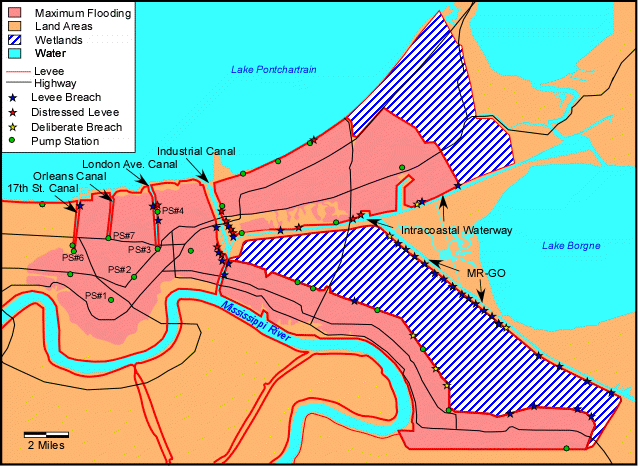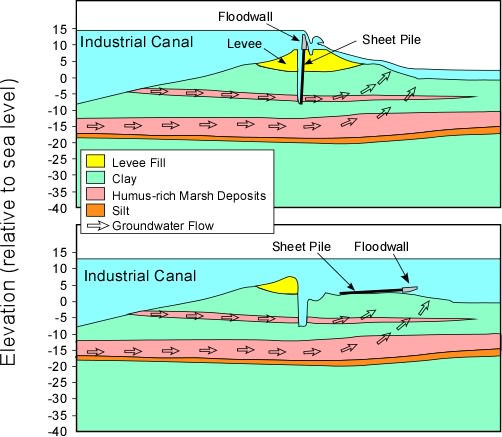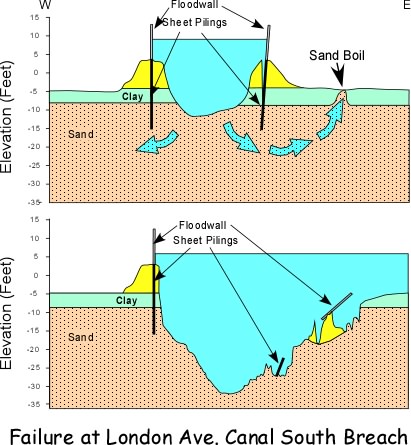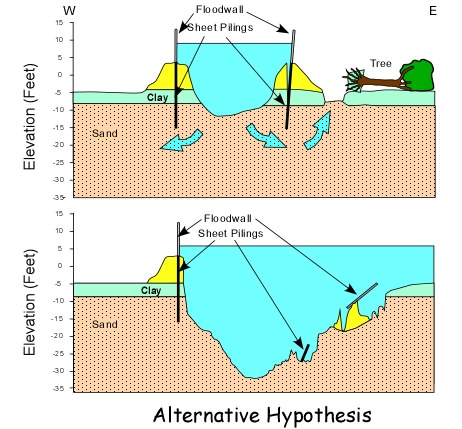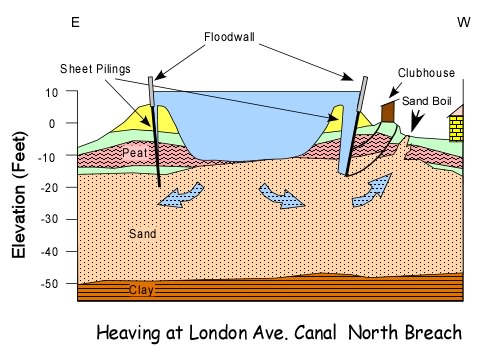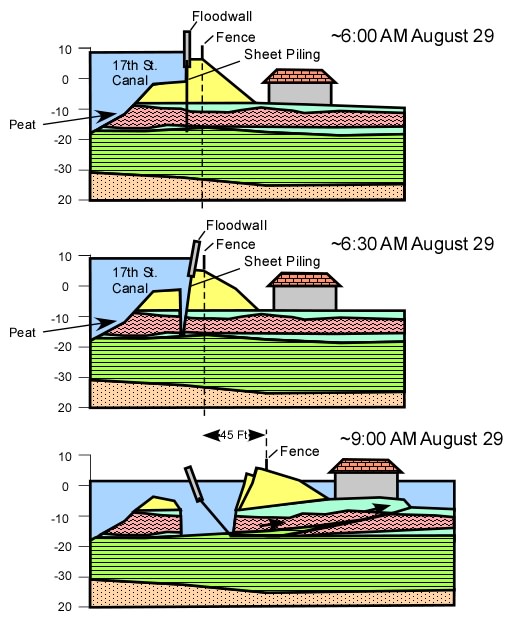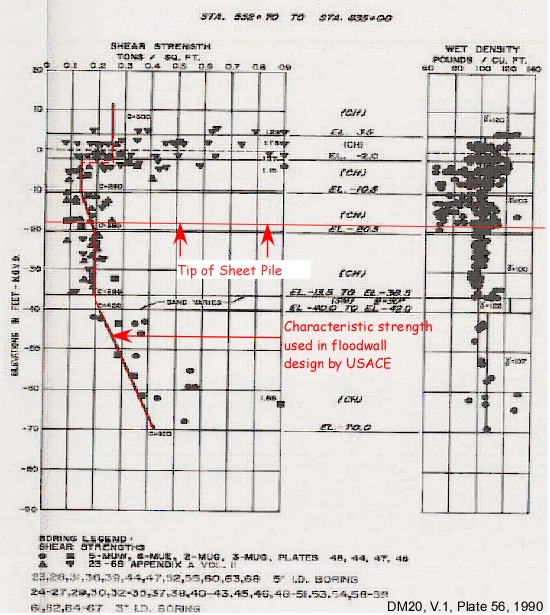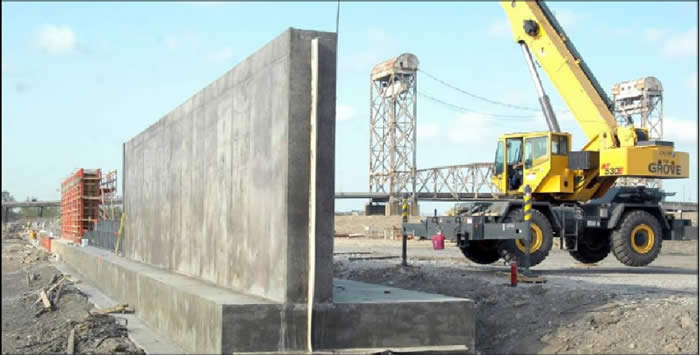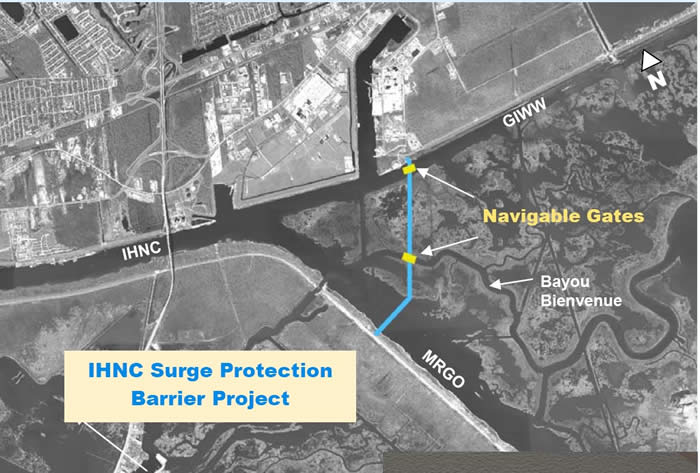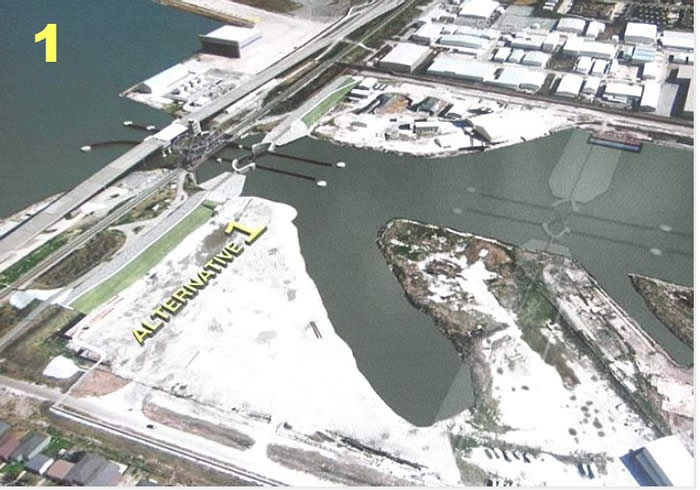Why did the Levees/Floodwalls Fail During Katrina?
.
Contributing Factors
.
- Katrina Storm Surge - increased pressure on bottom of canals & on levees &
floodwalls
- Weak Materials in the foundations of the levees and floodwalls, such as Permeable Sands,
Peat, and
Weak Clay
- Trees uprooted by hurricane force winds
- No armoring of tops of levees to prevent erosion after overtopping
- Poor design of levees & floodwalls - did not consider all of the above!
(I walls instead of T-walls, Low Factor of Safety, Short sheet pilings,
not enough consideration of complex and variable geological environment)
What could have prevented the failures? - Mitigation of Contributing Factors
- Storm Surge - Keep the Storm Surge Out of the Canals -
Gates at the mouth of Canals on Lake Pontchartrain
Pumps at Lake to pump water over Lakefront levees
- Weak Materials - Drive sheet pilings deep enough to cut off possible
seepage to outboard side of canals
Use T-walls instead of I-walls
- Trees uprooted by hurricane force winds - Don’t allow trees with roots that
may penetrate levees - remove existing trees
- No armoring of levees to prevent erosion after overtopping - Armor tops of
levees to prevent erosion
- Poor design of levees & floodwalls - did not consider all of the above!
Better oversight of design & construction of protection systems
Examples of Problems
Levee overtopping, while it does allow water in to the protected area, is not as serious as levee/floodwall breaching (Figure 1)
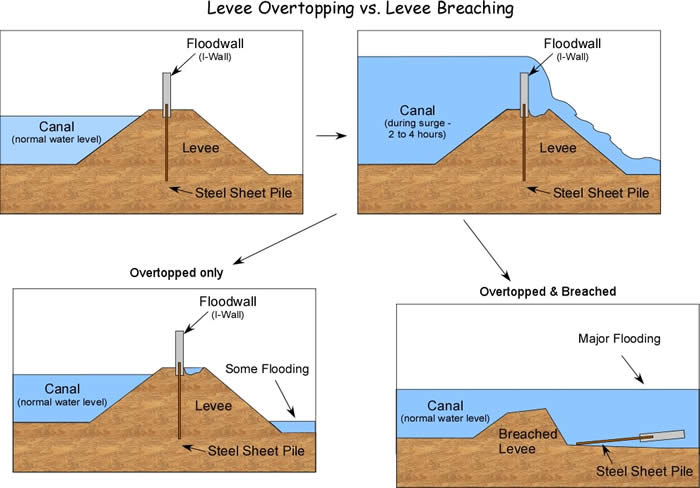
Figure 1
